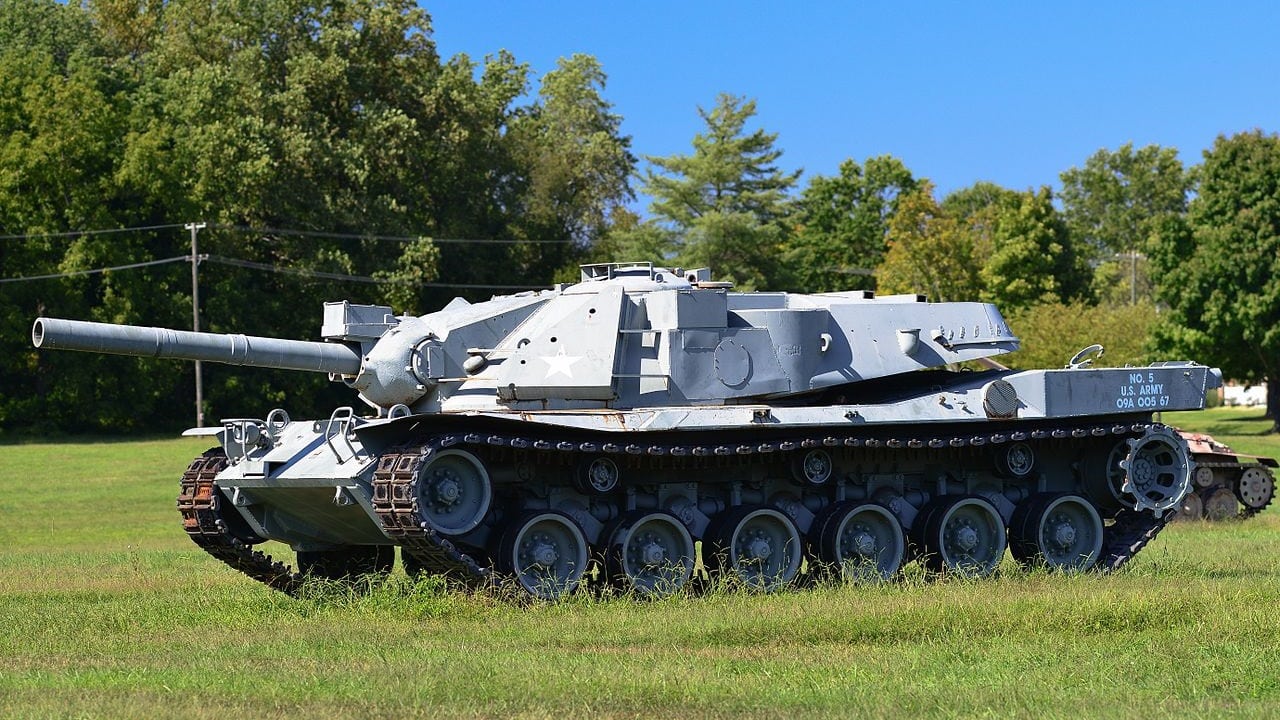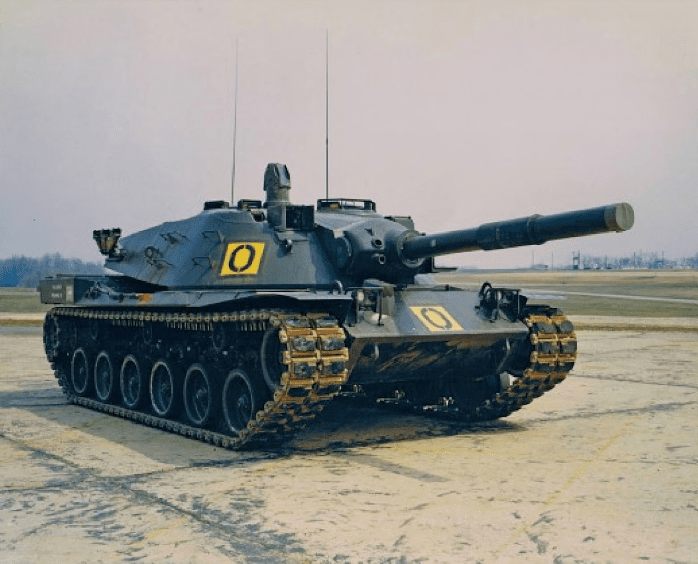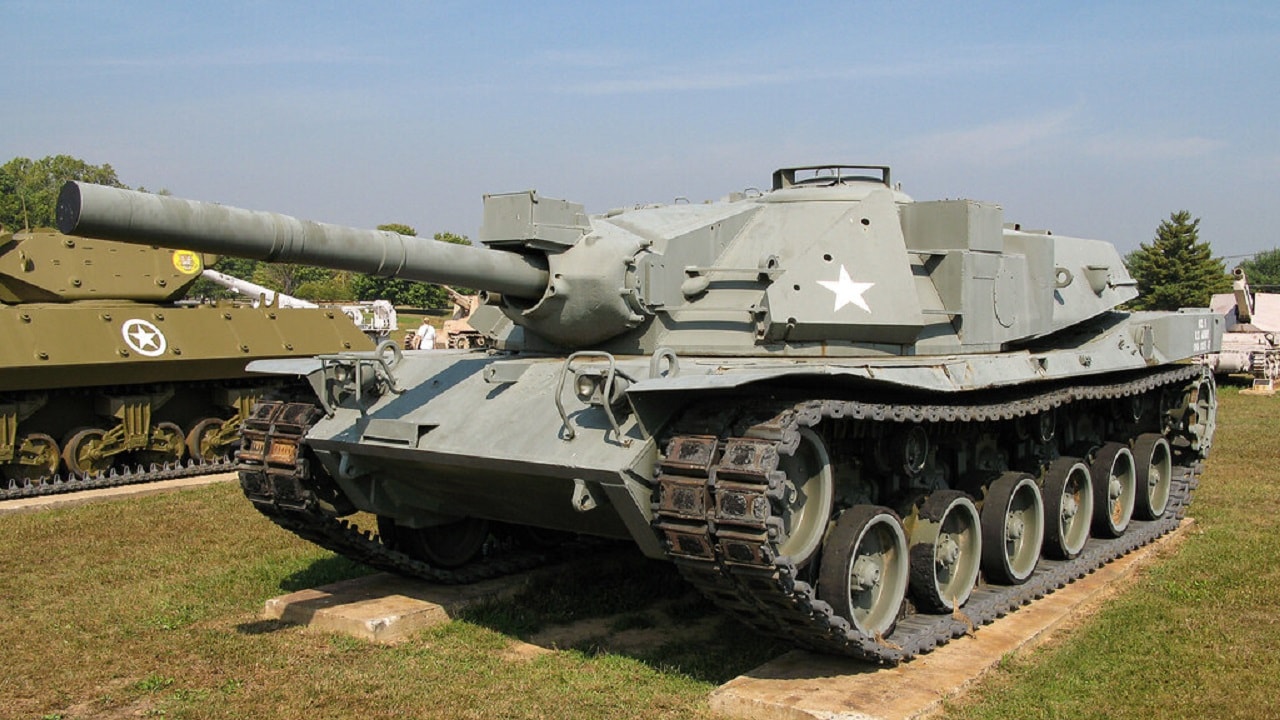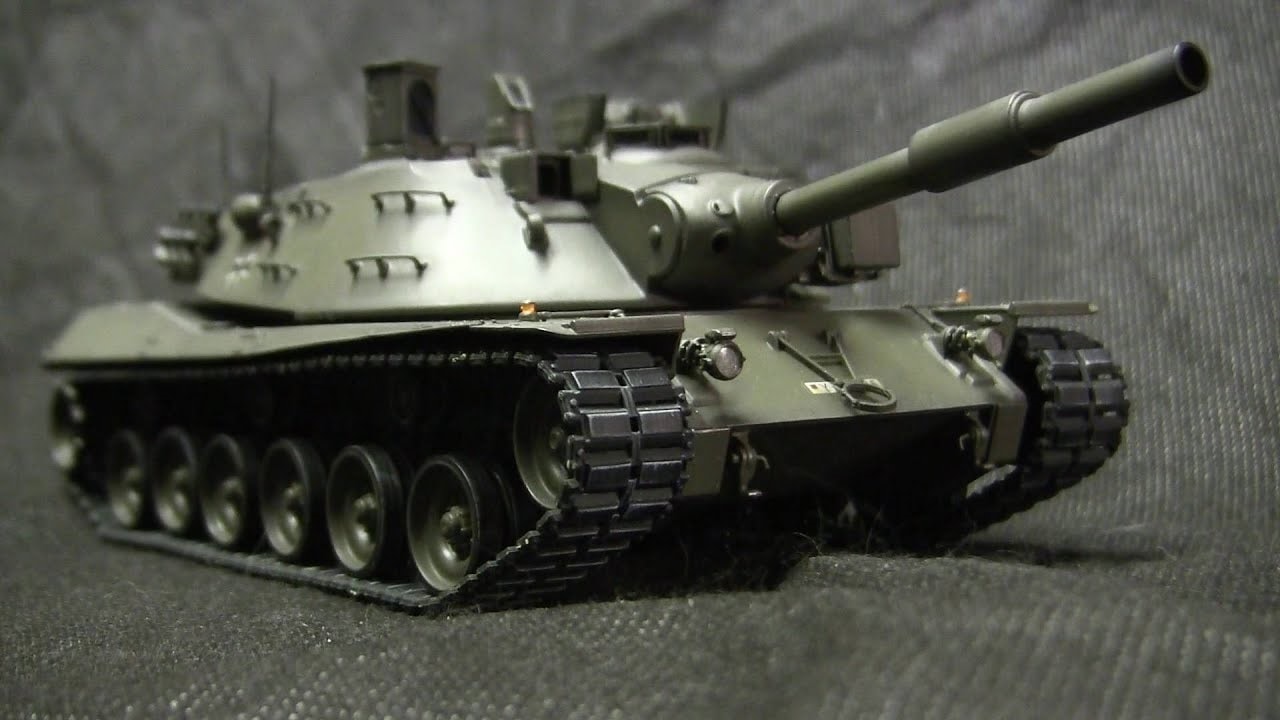In some ways, the M1 Abrams owes its existence to the failed MBT-70 project. Developed in the 1960s, the MBT-70 paved the way for many features that would later be included in both the M1 Abrams and the German Leopard 2.
Despite being developed in the 1960s, the tank boasted several features that were considered ahead of its time, such as a powerful 152 mm cannon, advanced armor, and a hydro-pneumatic suspension system.
But how does the tank compare to its successor, the M1 Abrams? What if they were to go head-to-head?
Background: The MBT-70
The MBT-70 was conceived in the 1960s as a collaborative effort between the United States and West Germany to create a next-generation MBT capable of countering Soviet advancements. The tank featured several innovative design elements, including a hydropneumatic suspension system that allowed it to “kneel” for a lower profile and improved stability. The MBT-70 also housed its entire crew in the turret, a unique approach intended to enhance crew survivability.
However, the project ran into trouble as it faced cost overruns, technical difficulties, and differing requirements between the U.S. Army and the German Bundeswehr. Communication between the two allies was sparse and unclear, resulting in the designers not knowing what changes to implement.
In addition, the German designers kept their trade secrets hidden from their American partners, further complicating communication and cooperation. In the end, the Americans and the West Germans could never sort out their differences, resulting in the project’s eventual cancellation.
Protection
In terms of protection, both the MBT-70 and the M1 Abrams had relatively advanced armor for their times. The MBT-70 featured spaced armor, which consisted of two layers separated by a gap. The outer layer was made of harder cold-rolled steel, while the inner layer was softer steel that also served as a spall liner. This design aimed to improve protection against kinetic energy projectiles by causing them to deform or break upon impact with the outer layer, while the inner layer absorbed and deflected fragments.
The M1 Abrams, on the other hand, employs composite armor, known as Chobham armor, which combines layers of ceramics, metals, and other materials to provide superior protection against both kinetic and chemical threats.
This advanced armor is designed to absorb and dissipate the energy from incoming projectiles, significantly enhancing crew survivability. Later variants of the Abrams also include a spall liner on the inside of the vehicle, which is a layer of Kevlar that prevents shrapnel from flying around in the tank. Additionally, the Abrams can be equipped with explosive reactive armor, which further enhances the tank’s safety against shaped charges.
Mobility
In terms of mobility, the MBT-70 was equipped with a 1,470 horsepower engine (MBT-70) or a 1,500 horsepower engine (KPz-70). This gave the tank an impressive power-to-weight ratio of around 9.2 hp/t (MBT-70) and 29.8 hp/t (KPz-70).
The tank could reach speeds of around 68 km/h on road and had a range of around 644 km (400 miles). The tank also featured a hydro-pneumatic suspension system that allowed the tank to “kneel,” lowering its profile and improving stability. This system also enabled adjustable ground clearance, enhancing cross-country performance.
Meanwhile, the M1 Abrams is powered by the Honeywell AGT1500 gas turbine engine, producing 1,500 horsepower. This gives the tank a power-to-weight ratio of around 26.9 hp/t to 23.8 hp/t depending on the variant.
It can reach speeds of up to 45 mph (72 km/h) on paved roads and around 30 mph (48 km/h) off-road. The Abrams has an operational range of approximately 426 km (265 miles) on road and 150-200 km (93-124 miles) cross-country. The Abrams’ engine gives it a lot of power and speed, unfortunately at the cost of range. The gas-turbine engine is a notorious gas-guzzler which is arguably, one of the tanks greatest weaknesses.
Firepower
When it comes to firepower, the MBT-70 was equipped with a 152 mm XM150E5 gun/launcher. This gun could fire both conventional high explosive and armor-piercing rounds and MGM-51 Shillelagh missiles, offering flexibility in engaging different types of targets.
The tank also sported a 20 mm Rh-202 autocannon at the Germans’ request and a 7.62 mm M73 or MG 3 coaxial machine gun. On paper, the MBT-70’s armament sounds threatening, but in reality, the cannon proved to be unreliable. The missile system was prone to technical difficulties and was listed as one of the primary failures of the project.
The initial M1 variant was equipped with a 105 mm M68A1 rifled gun. Later variants, including the M1A1 and M1A2, feature the 120 mm M256 smoothbore gun. This gun is a license-produced version of the Rheinmetall L/44 and is known for its accuracy and high muzzle velocity.
The tank is also equipped with a 0.50 caliber M2HB heavy machine gun and two 7.62 mm M240 machine guns (one coaxial and one pintle-mounted). The APFSDS rounds fired from the Abrams are made with depleted uranium, further boosting their lethality and penetrating capabilities.
Unsurprisingly, the M1 Abrams Wins
The MBT-70 incorporated a lot of innovative features for its time. Unfortunately for it, in the time between its cancellation and the M1 Abrams’ inception, technology has come a long way.
With better protection and better armaments, the Abrams is the better tank by a considerably long shot. The only area the MBT-70 wins out in is its mobility, due to its more efficient fuel usage.
MBT-70: A Story in Photos

MBT-70 Tank.

MBT-70. Image Credit: Creative Commons.

MBT-70 Tank. Image Credit: Creative Commons.

MBT-70. Image Credit: YouTube Screenshot.
About the Author:
Isaac Seitz, a 19FortyFive Defense Columnist, graduated from Patrick Henry College’s Strategic Intelligence and National Security program. He has also studied Russian at Middlebury Language Schools and has worked as an intelligence Analyst in the private sector.

